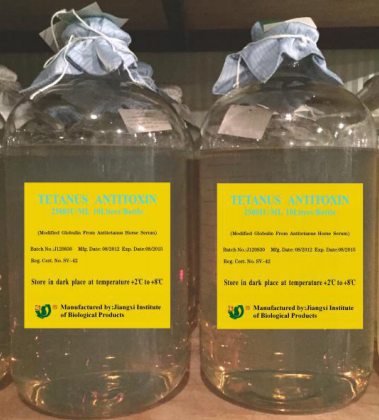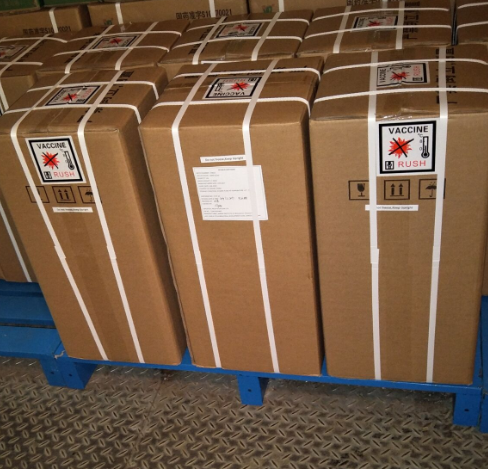Soymilk processing using soybean germination
Production Method
1. Sprout. The selected soybeans were cleaned and soaked in water and allowed to germinate at a temperature of 32-38°C. After about 3 days, about 12.7 to 38.1 mm of buds grow. In the germination stage, a certain thickness of soybeans is laid on a perforated fiber fabric screen or sheet. Sprinkle water on the bean layer with a sprinkler every 2 to 3 hours to keep the soybeans moist enough. Do not use water below the germination temperature when watering. In order to prevent germination is inhibited.
The sprouting stage of soybeans will improve the vitamin content of soybeans, and at the same time make it easier to carry out the subsequent peeling process. At the germination stage, a large amount of soy odor can be removed and the flavor can be improved.
2. Soak and wash. At the end of germination, the germinated soybeans were transported into a sodium hydroxide bath for approximately 4 hours. The skin tightly adhered to the soybean was continuously stripped in sodium hydroxide and then sent to a hydrogen peroxide washing bath for washing. Hydrogen peroxide tanks also play a role in removing odor. This will not give the soymilk and soaked germinated soybean extracts a bad smell.
After the treatment with hydrogen peroxide (cannot be delayed for too long; otherwise it will reduce the moisture of the soybeans), the soybeans are placed in a continuous water washing tank for continuous washing to remove the residual hydrogen peroxide from the soybeans, and Remove it. In each washing tank, a rotating drum or other container is used, or hydrostatic method is used. That is, the disinfecting water is directly injected upwards into the soybeans contained in the washing container (using a high-pressure pump to recycle water). Soybeans are effectively stirred to remove hydrogen peroxide and soy hulls.
In the washing stage, the soybean hulls still attached to the soybeans are separated and slowly sink to the bottom of the tank through the excretory device of the washing container. This process can be completed with the above-mentioned circulating water. The soy-laden effluent stream can be separated from the circulating stream by passing it through a filter or using other methods. The circulating flow draining device for removing the skin is preferably always lower than the level of the bath in the container. At the end of each washing stage, bath water is vented at the outlet of the bottom of the container. In every 3 washings, the washing liquid is circulated at least two or more times.
3. Neutralization. The soybeans are then treated with a weak acid solution to neutralize the hydrogen peroxide in the residual soybeans. The weak acid used is preferably hydrochloric acid, and other non-toxic acids such as citric acid may also be used. The soaking time of soybean in the weak acid is about 2 hours, and even dissolves and neutralizes residual hydrogen peroxide. Here, some skins that have not been removed during pretreatment can be removed. At the end of the acid treatment, the bean skin is excreted on the acid bath water and sent to a continuous washing stage.
After the neutralization phase is completed, the soybeans are placed in two or several fresh water washing tanks for continuous washing so that the acid remaining in the soybeans is dissolved and removed. To a certain extent, these washings also continue to remove the skin of soybeans. The final wash solution (ie, the wash solution in the second bath in the acid removal continuous program) is then tested. If the acid pH reading is less than 7, the soy must be washed one or more consecutive times and the pH of the remaining liquid at the end of the wash is at least 7. If the last pH reading detected is 7.5, some weak acid (such as hydrochloric acid or citric acid) can be added to the wash solution until just the pH is adjusted back to 7. When using this adjustment process, soy should be placed in a neutral solution for a certain period of time so that the neutral solution can soak the soybeans.
4. Milling. Soybeans came out of the last sink and were immediately sent to the stone mill for grinding. Germinated soybeans have a softness and a certain temperature. The water content is the same as when the soybeans have germinated. Grinding of the soybean granules changes the colloids into separate granules. After grinding into milk, add enough water. The moisture contained in the soybean corresponds to the moisture contained in the germinated soybean. The water is added to the soybean milk and the large amount of soybean solids is directly suspended. Stir the soy milk to keep the suspension.
5. Cooking and extraction. The diluted soymilk is cooked in a pressure cooker or placed in an open can. Both of these methods direct the flow of hot steam into the soy milk. The cooking time in the pressure cooker is 5-7 minutes, and the continuous cooking time in the open tank is about 20 minutes. The cooking temperature in the pressure cooker is approximately 121°C. The cooking temperature in the open tank is approximately 102°C. After the cooking is completed, the cooked soybean milk is processed to separate the liquid and suspended fine solids from the paste, and the suspension is extracted by an appropriate centrifugal extraction method.
6. Precipitate and remove water. A mixture of calcium sulfide and magnesium chloride is added to the extracted suspension (both added salts are used as a precipitant), and the mixture is slowly stirred until the solid in the liquid precipitates in the form of a curd to the bottom of the container and the curd is treated with water. Wash the material. Before removing the curd from the sedimentation vessel, first try to remove the excess liquid that precipitated the curd. When doing so, be careful not to damage the curd. The container is then filled with tap water, the function of which is to dissolve and wash away excess precipitation chemicals that have not chemically reacted with the protein. Stir with the added washing water slowly for several minutes, and then put a metal mesh blue on the curd to remove the curd. At the same time, the remaining water is removed from the basket space (that is, by means of pumping, siphoning, or impregnation). Then more water is removed by applying pressure to the cotton fiber filter bag. The filter bag has a drain hole at the bottom to drain the water and has a movable pressure plate and a piston that moves downwards. The input filter bag relaxation pressure is 45.4 kg per 1290 cm 2 input pressure. With a fixed load utilization pressure, the pressure is applied for 15 to 30 minutes until the residual liquid can be discharged intermittently.
7. Milling and feeding. After raising the moisture, the rest of the curd is finely powdered. This work can be carried out using a grinding method, and it is preferable to use an emulsifying machine or a colloidal mill so that very fine particles can be obtained. The ingredients are then added to the granules so that the ingredients are as close as possible to the natural milk or other natural milk that can be imitated. When emulsified in full fat milk, oils (ie, cottonseed oil, peanut oil, or the like), sugar, salt, calcium gluconate, and ferrous sulfide may be added.
When processing fortified milk, add vitamins A, D, and C. In addition, vitamin methionine is added. The batching process is preferably followed by a separation stage to avoid bacterial infection and propagation in milk. Prior to emulsification, syrup, oil, calcium gluconate, vitamins A, D, C, ferrous sulfate, and optional ingredients, as well as ground nut kernels, are added to the mixture.
8. Sterilization and homogenization. In order to avoid infecting bacteria in the pre-processing stage, the emulsified product should be sterilized using the standard dairy sterilization method. After the batching process, the dairy product is homogenized under the condition of 211 kg/cm 2 in order to make the oil suspended in the milk. The liquid state is maintained and separation is prevented. A common homogenizer can be used in this process.
9. Cooling and packaging. Then, the homogenized milk was cooled to 4°C and packaged. Fresh milk can be packaged in regular fresh milk containers and then refrigerated to market. Canned milk eliminates the sterilization and freezing stages, and the homogenized milk is placed directly into the can of the can, and then the canned milk is cooked under pressure for 30 minutes. This method replaces the sterilization phase.
We are a holding conglomerate focusing on building a sustainable business model that combines agricultrue, animal husbandry,medicine and health. It has built the first sustainable industry chain in China in which its agriculture and and animal farming parts support each other to maximize resource utilization, and both provide raw materials and inpetus for development in medicine, health and beauty production lines.


Active Pharmaceutical Ingredients (API)
Active Pharmaceutical Ingredients (API),Powder Active Pharmaceutical Ingredient,Intermediate Active Pharmaceutical Ingredient,Veterinary Active Pharmaceutical Ingredients
Jiangxi Institute of Biological Products Inc. , https://www.jxinstitute.com